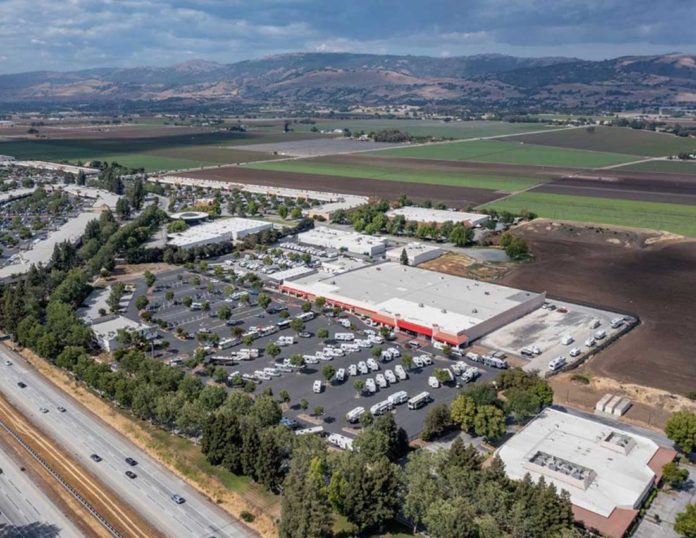Driven by increasing residential values and despite a “troubled” commercial real estate market, Santa Clara County’s overall property assessment roll grew by $35.6 billion, or 5.4% in the last year, according to Assessor Larry Stone’s office.
The growth includes an increase of around 5% in residential and commercial property values in Gilroy, Morgan Hill and unincorporated areas of the county.
Stone’s office said the 2024 assessment roll reflects the “complex and unpredictable status of both the region’s residential and commercial property markets.” Although the number of residential change of ownership transactions continued to decline in the last year, higher values countered the negative impact.
In 2023, residential properties saw an overall decline throughout the county, but those values rebounded in 2024. Now, the county’s home property values are the highest in the country, Stone’s office noted.
And although commercial property sales remain volatile and new construction of commercial properties came to a halt last year, the global attraction of Santa Clara County “remains strong.”
The 2024-25 assessment roll reflects the total net assessed value of all real and business property in Santa Clara County as of the Jan. 1, 2024 lien date, Stone’s office said.
The roll also reflects changes between Jan. 1 and Dec. 31, 2023.
The value of this year’s roll reached a new height of $696.8 billion, a “surprising” 5.39% increase over the prior year, Stone said.
The leading contributors to the increase in roll growth are changes in ownership, application of the annual 2% inflation factor and new construction, which accounted for more than $14.9 billion, $10.6 billion and $5.9 billion, respectively, the assessor’s office said. Business property values added $2.2 billion.
Changes in property ownership accounted for 42% of the 2024 increase, the assessor continued.
In early 2023, the real estate markets cooled from 2022 record levels. Interest rates increased, the number of transactions declined and market values stabilized. In response, the assessor proactively reduced the assessments of 17,000 residential properties in 2023.
Then in 2024, residential property values surged and the assessed values of more than half the properties in Proposition 8 decline status were fully restored.
A key factor in the 2024 increase is Proposition 13, which limits the assessment of properties without new activity or transactions to the California Consumer Price Index (CCPI) or 2%, whichever is lower. The final component of the 2024-25 assessment roll growth is the 2% increase in the assessed value of those properties, adding $10.6 billion to the assessment roll.
“Even when real estate values are soaring, Proposition 13 limits the increase in assessment to two percent, a significant financial benefit to most property owners,” Stone said.
The 2024 assessment roll includes 11,226 properties in “decline status,” the assessor’s office added.
The latest roll also shows that technological innovation continues to “generate significant investment in Silicon Valley.” But in 2023, the number of venture capital deals fell by 44 percent.
The office vacancy rate in Silicon Valley has jumped to more than 20% in the past year, due to declining rental rates, an absence of big leasing deals and the continuation of hybrid and remote working, the assessment roll also reflects.
Furthermore, a growing number of office buildings are selling for less than their assessed value, and foreclosures due to delinquent loans are becoming more frequent, the assessor said.
“Ninety-eight percent of the $115.2 billion of assessed value currently under appeal involves commercial property,” Stone said. “We expect to receive a greater number of commercial property assessment appeals filed this year, which may result in assessment roll corrections reducing the value of the assessment roll.”
New construction remains a key factor in assessment growth. In 2024, several large-scale construction projects were completed that contributed $5.9 billion in new construction. These include $4.7 billion worth of apartment buildings, Stone’s office said.
The full impact of the volatile commercial real estate market will be more clear in future years. Further reductions in the assessment roll are likely in the next few years, according to the assessor’s office.
Long-term, the outlook for the region’s assessed property values looks good, Stone added. That is due to the global attraction of the region that is fed by the presence of 80% of all tech R&D occurring in Silicon Valley, as well as the presence of three of the most valuable companies in the world—Apple, Microsoft and NVIDIA—in Santa Clara County.
Stone expressed concerns over the potential impact of current markets and other economic factors on local values.
“While residential property values have stabilized recently, high mortgage interest rates and inflation have reduced consumer buying power,” Stone said. “With office vacancy increasing due in part to remote work, and the residential sales decreasing, the volatile and unpredictable nature of Santa Clara County real estate causes concern for the future of property values.”
Property tax revenue is a significant source of public revenue for public schools, community colleges, cities, special districts and Santa Clara County. Half of all property tax revenue generated in Santa Clara County goes to fund public education.
On June 28, the assessor’s office mailed annual Notification of Assessed Value (NAV) Cards to 498,347 properties, reporting each property’s 2024 assessed value. The notice serves as the basis for the property tax bill.
Property owners who can demonstrate their assessment is higher than the market value of their property (as of Jan. 1, 2024) can request an informal review of their assessment no later than Aug. 1.
The annual notice also describes the process for filing a formal assessment appeal by Sept. 25.
More information is available from the clerk of the board by calling 408.299.5088 or visiting the website boardclerk.sccgov.org/assessment-appeals.
Local property value growth
South County’s overall property values grew by the following amounts in the past year, according to the assessment roll released by the assessor’s office this week:
Gilroy
2023-34 value: $11.6 billion
2024-25: $12.1 billion
Percent growth: 4.86
Morgan Hill
2023-24: $13.1 billion
2024-25: $13.9 billion
Percent growth: 5.43
San Jose
2023-24: $246.2 billion
2024-25: $258.5 billion
Percent growth: 5.01
Unincorporated
2023-24: $23.3 billion
2024-25: $24.2 billion
Percent growth: 3.85















